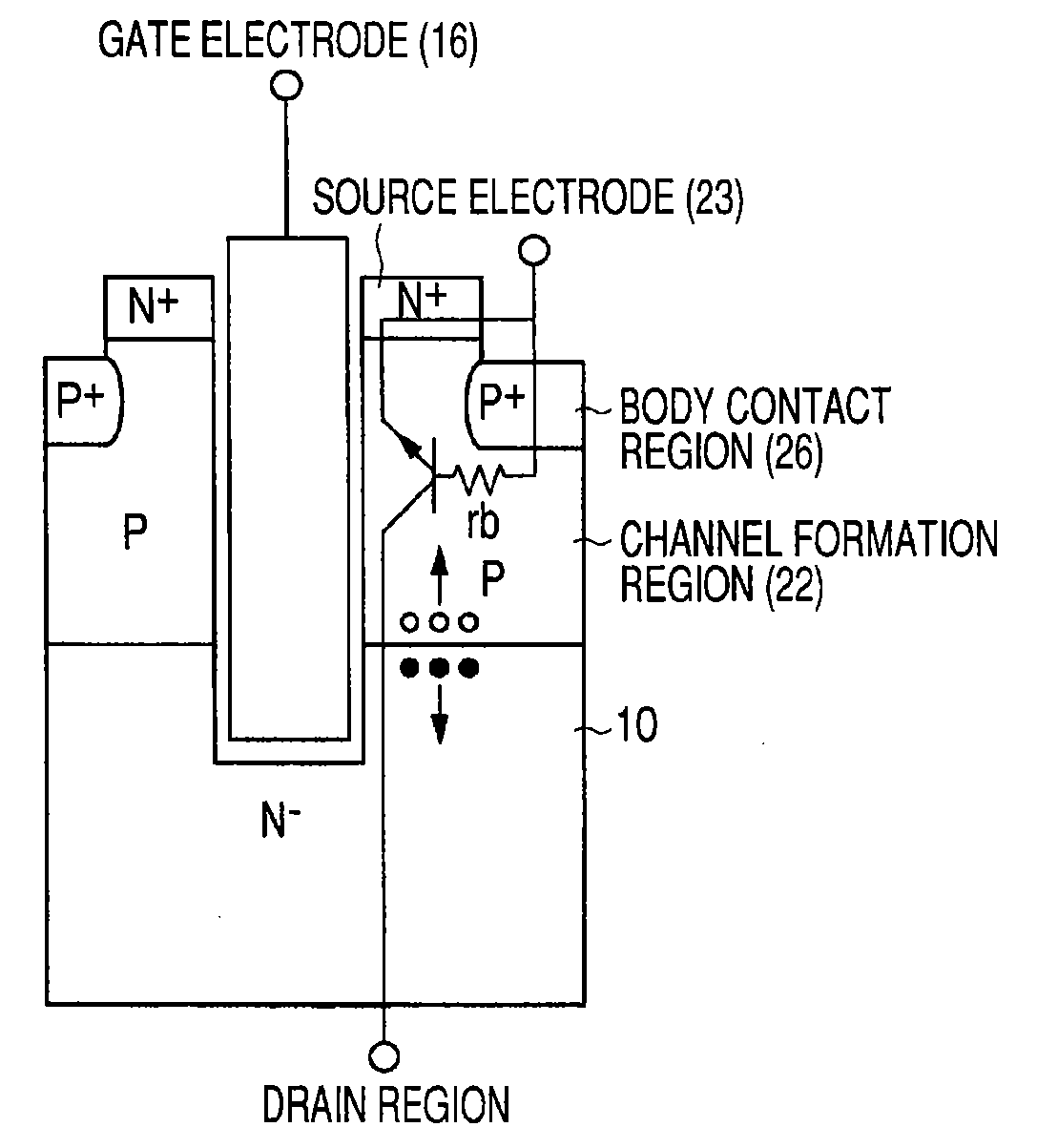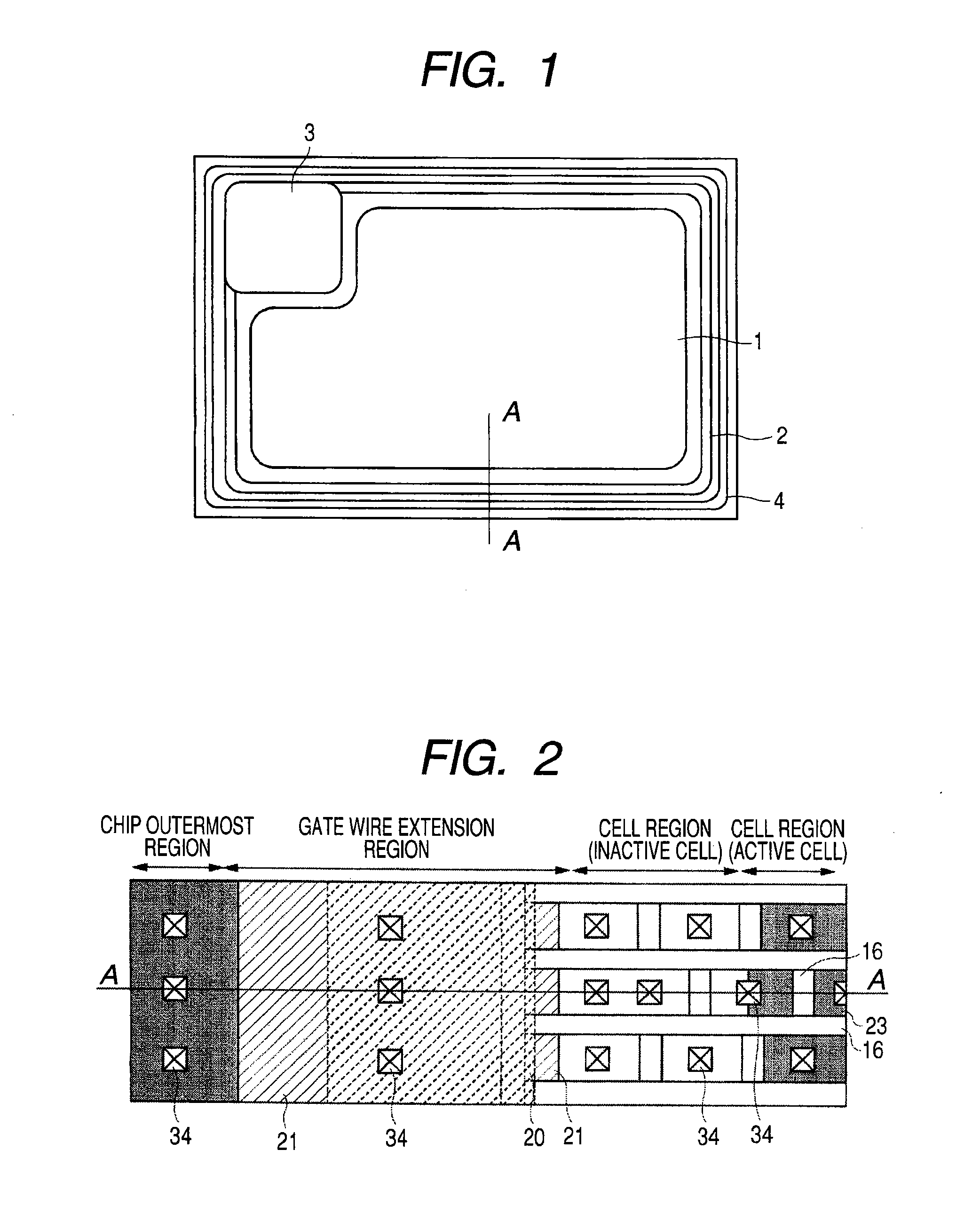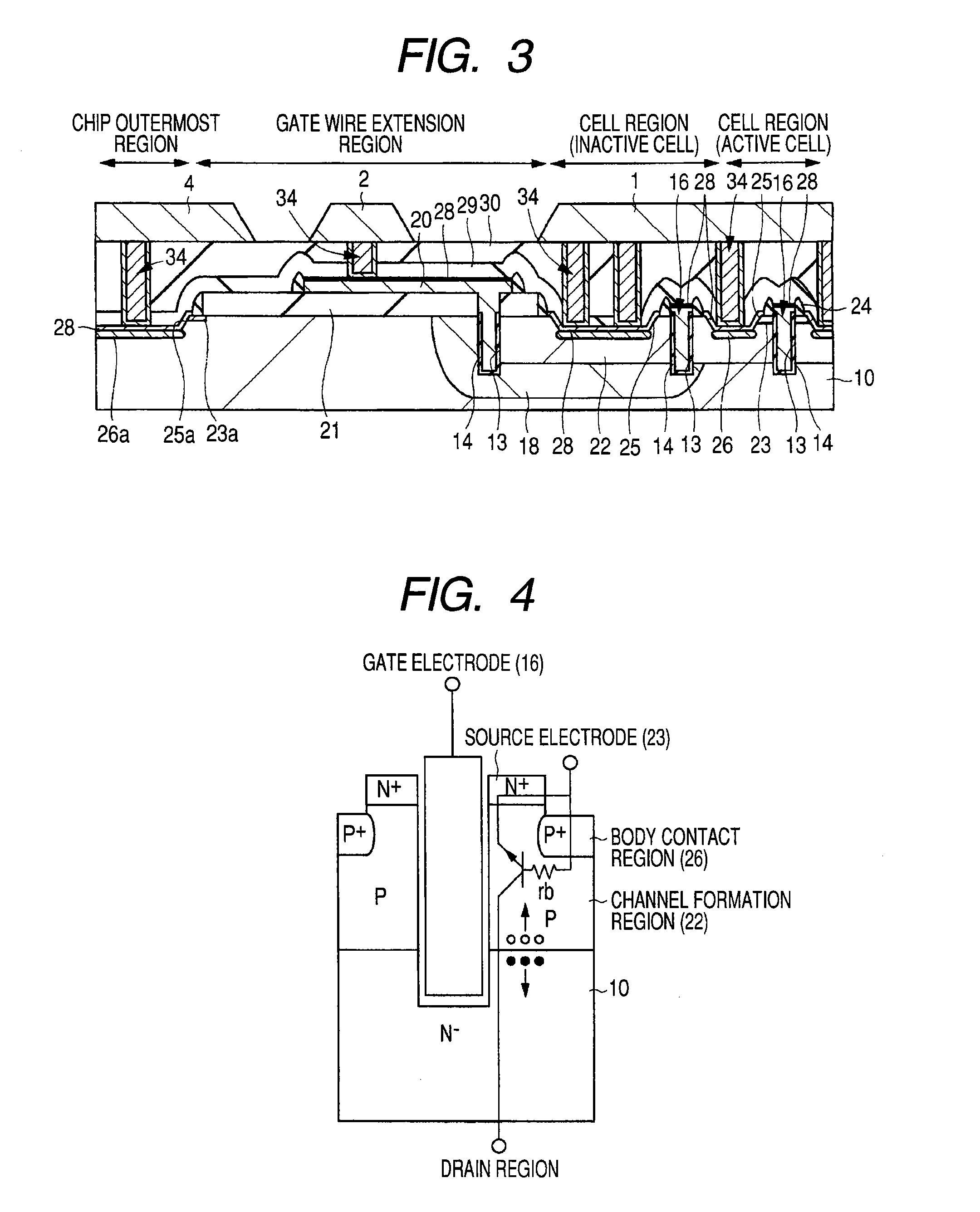Semiconductor device and method of manufacturing the same
- Summary
- Abstract
- Description
- Claims
- Application Information
AI Technical Summary
Benefits of technology
Problems solved by technology
Method used
Image
Examples
first preferred embodiment
[0089]A semiconductor device according to a first preferred embodiment is described with reference to the drawings. FIG. 1 is a plan view illustrating an upper surface of the semiconductor chip over which a semiconductor device according to the first preferred embodiment is formed. As shown in FIG. 1, a source pad 1 made of, for example, an aluminum wire is formed in a central portion of the semiconductor chip. A gate wire 2 is formed so as to surround the source pad 1, and the gate wire 2 is coupled to a gate pad 3. A guard ring 4 is formed outward of the gate pad 3 and the gate wire 2 so as to surround the circumference of the semiconductor chip. The gate wire 2, the gate pad 3, and the guard ring 4 are also formed of, for example, aluminum wire. The guard ring 4 is a ring-shaped structure provided around the element formation region for the purpose of surface protection.
[0090]FIG. 2 is a schematic enlarged cross-sectional view taken along the line A-A in FIG. 1. FIG. 2 illustrate...
second preferred embodiment
[0145]A second preferred embodiment describes an example in which the source region is formed from a shallow source extension region and a deep source diffusion region. First, a manufacturing method of a power MISFET according to the second preferred embodiment is described with reference to the drawings.
[0146]The process steps from FIG. 5 through FIG. 15 are the same as described in the first preferred embodiment. Subsequently, as shown in FIG. 30, a source extension region 35 (first source region) the formation position of which is shallow is formed adjacent to a gate electrode 16 in the cell region (active cell) using a photolithography technique and an ion implantation technique. The source extension region 35 is a semiconductor region doped with an n-type impurity.
[0147]Next, as shown in FIG. 31, a silicon oxide film is formed over the entire surface of the main surface of the semiconductor substrate 10, and thereafter, the sidewall 24 is formed on the side wall portion of the ...
third preferred embodiment
[0160]A third preferred embodiment describes an example in which the invention is applied to a technique for forming a power MISFET and a Schottky barrier diode in the same semiconductor chip.
[0161]FIG. 40 is a circuit diagram of a common synchronous rectifier-type DC / DC converter that uses power MISFETs, and FIG. 41 is a timing chart of the main-switch power MISFET Q1 and the synchronous rectifying power MISFET Q2 shown in FIG. 40. In FIG. 40, Q1 represents a main-switch power MISFET, Q2 represents a synchronous rectifying power MISFET, BD1 and BD2 represent body diodes, and SBD represents a Schottky barrier diode. Also, L represents inductance and C represents a capacitor element. The body diode BD1 and the body diode BD2 are incorporated in the main-switch power MISFET Q1 and the synchronous rectifying power MISFET Q2, respectively, and they are coupled in parallel. The Schottky barrier diode SBD is coupled in parallel to the synchronous rectifying power MISFET Q2.
[0162]The main-...
PUM
 Login to View More
Login to View More Abstract
Description
Claims
Application Information
 Login to View More
Login to View More - R&D
- Intellectual Property
- Life Sciences
- Materials
- Tech Scout
- Unparalleled Data Quality
- Higher Quality Content
- 60% Fewer Hallucinations
Browse by: Latest US Patents, China's latest patents, Technical Efficacy Thesaurus, Application Domain, Technology Topic, Popular Technical Reports.
© 2025 PatSnap. All rights reserved.Legal|Privacy policy|Modern Slavery Act Transparency Statement|Sitemap|About US| Contact US: help@patsnap.com



